8 start with C start with C

Canine Confidential has the answers. Written by award-winning scientist—and lifelong dog lover—Marc Bekoff, it not only brilliantly opens up the world of dog behavior, but also helps us understand how we can make our dogs’ lives the best they can possibly be. Rooted in the most up-to-date science on cognition and emotion—fields that have exploded in recent years—Canine Confidential is a wonderfully accessible treasure trove of new information and myth-busting. Peeing, we learn, isn’t always marking; grass-eating isn’t always an attempt to trigger vomiting; it’s okay to hug a dog—on their terms; and so much more. There’s still much we don’t know, but at the core of the book is the certainty that dogs do have deep emotional lives, and that as their companions we must try to make those lives as rich and fulfilling as possible. It’s also clear that we must look at dogs as unique individuals and refrain from talking about “the dog.”
Bekoff also considers the practical importance of knowing details about dog behavior. He advocates strongly for positive training—there’s no need to dominate or shame dogs or to make them live in fear—and the detailed information contained in Canine Confidential has a good deal of significance for dog trainers and teachers. He also suggests that trainers should watch and study dogs in various contexts outside of those in which they are dealing with clients, canine and human, with specific needs.
There’s nothing in the world as heartwarming as being greeted by your dog at the end of the workday. Read Canine Confidential, and you’ll be on the road to making your shared lives as happy, healthy, and rewarding as they can possibly be.
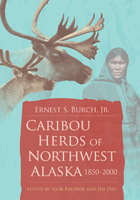
In his final, major publication Ernest S. “Tiger” Burch Jr. reconstructs the distribution of caribou herds in northwest Alaska using data and information from research conducted over the past several decades as well as sources that predate western science by more than one hundred years. Additionally, he explores human and natural factors that contributed to the demise and recovery of caribou and reindeer populations during this time. Burch provides an exhaustive list of published and unpublished literature and interviews that will intrigue laymen and experts alike. The unflinching assessment of the roles that humans and wolves played in the dynamics of caribou and reindeer herds will undoubtedly strike a nerve. Supplemental essays before and after the unfinished work add context about the author, the project of the book, and the importance of both.

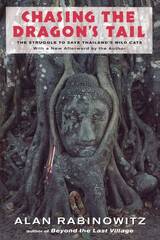
In 1987, zoologist Alan Rabinowitz was invited by the Thai government to study leopards, tigers, and other wildlife in the Huai Kha Khaeng valley, one of Southeast Asia's largest and most prized forests. It was hoped his research would help protect the many species that live in that fragile reserve, which was being slowly depleted by poachers, drug traffickers, and even the native tribes of the area. Chasing the Dragon's Tail is the remarkable story of Rabinowitz's life and adventures in the forest as well as the streets of Bangkok, as he works to protect Thailand's threatened wildlife.
Based on Rabinowitz's field journals, the book offers an intimate and moving look at a modern zoologist's life in the field. As he fights floods, fire-ant infestations, elephant stampedes, and a request to marry the daughter of a tribal chief, the difficulties that come with the demanding job of species conservation are dramatically brought to life. First published in 1991, this edition of Chasing the Dragon's Tail includes a new afterword by the author that brings the story up to date, describing the surprising strides Thailand has made recently in conservation.
Other titles by Alan Rabinowitz include Beyond the Last Village and Jaguar.
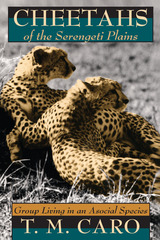
Why do cheetah cubs stay with their mother for a full year after weaning? Why do adolescents remain in groups? Why do adult males live in permanent associations with each other? Why do adult females live alone? Through observations on the costs and benefits of group living, Caro offers new insight into the complex behavior of this extraordinary species. For example, contrary to common belief about cooperative hunting in large carnivores, he shows that neither adolescents nor adult males benefit from hunting in groups.
With many surprising findings, and through comparisons with other cat species, Caro enriches our understanding of the evolution of social behavior and offers new perspectives on conservation efforts to save this charismatic and endangered carnivore.
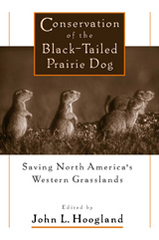
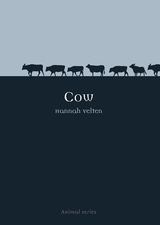
From the milk we drink in the morning, to the leather shoes we slip on for the day, to the steak we savor at dinner, our daily lives are thoroughly bound up with cows. Yet there is a far more complex story behind this seemingly benign creature, which Hannah Velten explores here, plumbing the rich trove of myth, fact, and legend surrounding these familar animals.
From the plowing field to the rodeo to the temple, Velten tracks the constantly changing social relationship between man and cattle, beginning with the domestication of aurochs around 9000 BCE. From there, Cow launches into a fascinating story of religious fanaticism, scientific exploits, and the economic transformations engendered by the trade of the numerous products derived from the animal. She explores in engaging detail how despite cattle’s prominence at two ends of a wide spectrum: Hinduism venerates the cow as one of the most sacred members of the animal kingdom, while beef is a prized staple of the American diet. Thought provoking and informative, Cow restores this oft-overlooked animal to the nobility it richly deserves.
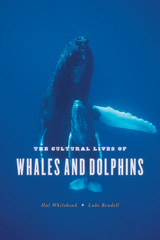
Unequivocally: yes. In The Cultural Lives of Whales and Dolphins, cetacean biologists Hal Whitehead, who has spent much of his life on the ocean trying to understand whales, and Luke Rendell, whose research focuses on the evolution of social learning, open an astounding porthole onto the fascinating culture beneath the waves. As Whitehead and Rendell show, cetacean culture and its transmission are shaped by a blend of adaptations, innate sociality, and the unique environment in which whales and dolphins live: a watery world in which a hundred-and-fifty-ton blue whale can move with utter grace, and where the vertical expanse is as vital, and almost as vast, as the horizontal.
Drawing on their own research as well as a scientific literature as immense as the sea—including evolutionary biology, animal behavior, ecology, anthropology, psychology, and neuroscience—Whitehead and Rendell dive into realms both humbling and enlightening as they seek to define what cetacean culture is, why it exists, and what it means for the future of whales and dolphins. And, ultimately, what it means for our future, as well.
READERS
Browse our collection.
PUBLISHERS
See BiblioVault's publisher services.
STUDENT SERVICES
Files for college accessibility offices.
UChicago Accessibility Resources
home | accessibility | search | about | contact us
BiblioVault ® 2001 - 2024
The University of Chicago Press









